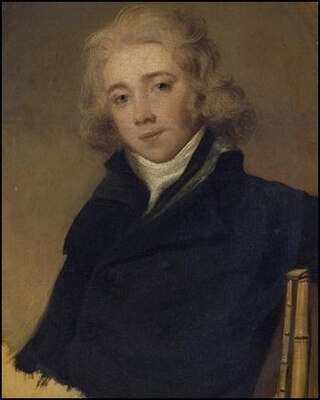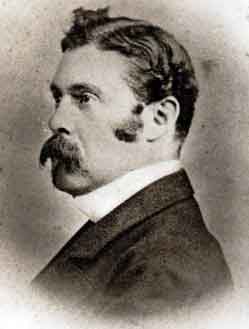
The Symphony No. 94 in G major is the second of the twelve London symphonies written by Joseph Haydn. It is popularly known as the Surprise Symphony.

Ludwig van Beethoven's Symphony No. 1 in C major, Op. 21, was dedicated to Baron Gottfried van Swieten, an early patron of the composer. The piece was published in 1801 by Hoffmeister & Kühnel of Leipzig. It is not known exactly when Beethoven finished writing this work, but sketches of the finale were found to be from 1795.

Mendelssohn's Piano Concerto No. 1 in G minor, Op. 25, was written in 1830–31, around the same time as his fourth symphony ("Italian"), and premiered in Munich on 17 October 1831. This concerto was composed in Rome during a travel in Italy after the composer met the pianist Delphine von Schauroth in Munich. The concerto was dedicated to her. Mendelssohn attended one party after another in Munich in October 1831, the month of the premiere, but he also played chamber music and taught double counterpoint. He performed the piece himself at the premiere, which also included performances of his Symphony No. 1 and the Overture from Midsummer Night's Dream. He had already written a piano concerto in A minor with string accompaniment (1822) and two concertos with two pianos (1823–24).

Asger Hamerik (Hammerich) was a Danish composer of the late romantic period.
The two Serenades, Op. 11 and 16, represent early efforts by Johannes Brahms to write orchestral music. They both date from after the 1856 death of Robert Schumann when Brahms was residing in Detmold and had access to an orchestra.

The String Octet in E-flat major, Op. 20, MWV R 20, was written by the 16-year-old Felix Mendelssohn during the fall of 1825 and completed on October 15. Written for four violins, two violas, and two cellos, this work created a new chamber music genre. Conrad Wilson summarizes much of its reception ever since: "Its youthful verve, brilliance and perfection make it one of the miracles of nineteenth-century music." This was one of the first works of Mendelssohn to be very well received.

Hyacinthe Jadin was a French composer who came from a musical family. His uncle Georges Jadin was a composer in Versailles and Paris, along with his father Jean Jadin, who had played bassoon for the French Royal Orchestra. He was one of five musical brothers, the best known of whom was Louis-Emmanuel Jadin.

Symphony No. 1 in C minor, Op. 11, is a work by Felix Mendelssohn, completed on 31 March 1824, when the composer was only 15 years old. The autograph score was published in 1831.
The Symphony No. 4 in C minor, D 417, is a symphony by Franz Schubert completed in April 1816 when Schubert was 19 years old, a year after his Third Symphony However, it was not premiered until November 19, 1849, in Leipzig, more than two decades after Schubert's death. The symphony was called the Tragic by its composer.

The String Quartet No. 3 in D major, Op. 44, No. 1, MWV R 30 was composed by Felix Mendelssohn (1809-1847) in July 1838 at the age of 29. It premiered in 1839, then was published later in 1840. It is a traditional quartet, comprising two violins, a viola, and a cello. The piece is part of the Op. 44 set of 3 string quartets that Mendelssohn dedicated to the Crown Prince of Sweden.
An organ concerto is an orchestral piece of music in which a pipe organ soloist is accompanied by an an orchestra, although some works exist with the name "concerto" which are for organ alone.

Marie-Alexis de Castillon de Saint-Victor was a French composer.
The six string quartets, K. 168–173, were composed by Wolfgang Amadeus Mozart in late 1773 in Vienna. These are popularly known as the Viennese Quartets. Mozart may have hoped to have them published at the time, but they were published only posthumously by Johann André in 1801 as Mozart's Op. 94.

Josef Triebensee (Trübensee) was a Bohemian composer and oboist.
Joseph Haydn's String Quartets, Op. 64, is a set of six string quartets composed in 1790. Along with six earlier quartets published under the opus numbers 54 and 55, they are known as the Tost quartets, after the Hungarian violinist and later merchant Johann Tost who helped Haydn find a publisher for the works. Unlike the earlier quartets, Haydn actually dedicated the Op. 64 set to Tost in gratitude for his efforts.

The three String Trios, Op. 9 were composed by Ludwig van Beethoven in 1797–98. He published them in Vienna in 1799, with a dedication to his patron Count Johann Georg von Browne (1767–1827). They were first performed by the violinist Ignaz Schuppanzigh with two colleagues from his string quartet. According to the violinist and conductor Angus Watson, these were probably Franz Weiss on viola and either Nikolaus Kraft or his father Anton on cello. Each of the trios consists of four movements:










